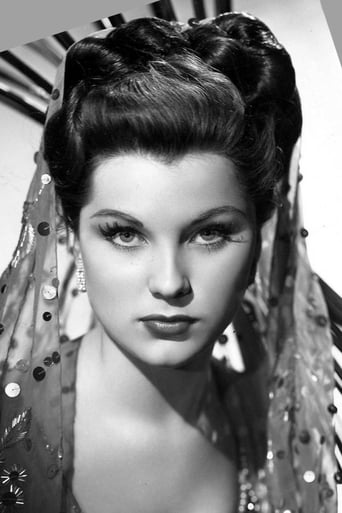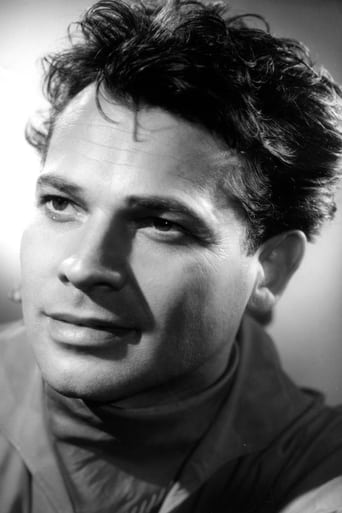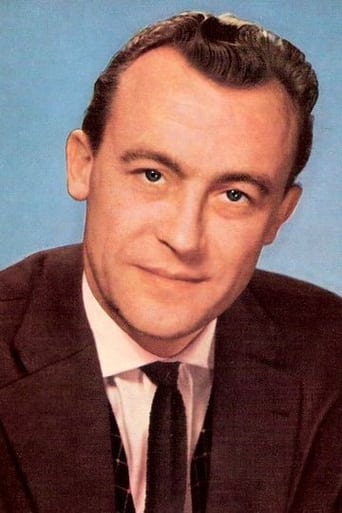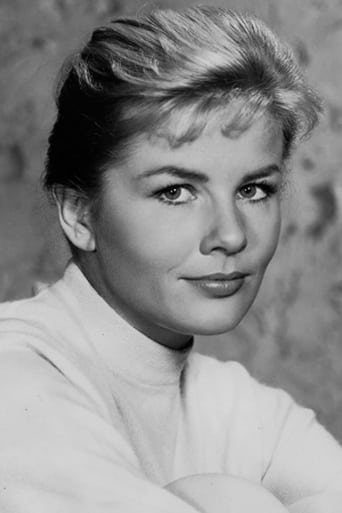BeSummers
Funny, strange, confrontational and subversive, this is one of the most interesting experiences you'll have at the cinema this year.
Donald Seymour
This is one of the best movies I’ve seen in a very long time. You have to go and see this on the big screen.
Quiet Muffin
This movie tries so hard to be funny, yet it falls flat every time. Just another example of recycled ideas repackaged with women in an attempt to appeal to a certain audience.
Brenda
The plot isn't so bad, but the pace of storytelling is too slow which makes people bored. Certain moments are so obvious and unnecessary for the main plot. I would've fast-forwarded those moments if it was an online streaming. The ending looks like implying a sequel, not sure if this movie will get one
talula1060
This movie should have been so much better. Lang is capable of a lot more. Unfortunately, it did not live up to its creator's abilities. The writing was stilted and awkward with unrealistic dialogue. Whenever anyone spoke, they basically said whatever they needed to advance the plot regardless if it was believable. There were a few lines about the gods thrown in to remind us we are in India. There is absolutely no subtlety here at all.
The worst part about this film was the acting. Not one of these actors was believable or natural. I realize acting styles have changed over the years. The prince with his bad Indian makeup and phony looking jewelry had two moods: bland or outraged. He marched in front of cages of tigers for no apparent reason other than that he's a prince who controls everything and because this movie has tiger in the title. Some of the other actors were caricatures of what they thought Indians should be like. Dark brown makeup with blue eyes and Nordic features? What was Lang thinking? Then we've got the two leads: the dancer and the German architect. Paget the dancer was beautiful to look at, but that's where her talent ended. If she's sad, she's sitting there with a huge frown. If scared, an exaggerated wide eyed look. It's ridiculous how badly she acts in this movie. Reminds me of acting from the 20s. At least then they had no dialogue to work with, so movement was everything. Another thing that is bound to make the acting awful is that the lead actress is not speaking the same language as her paramour... Literally. This makes it impossible for them to relate to and respond to one another. Her lines were overdubbed in German while she spoke them in English in the scene. Her lover spoke German throughout. I'm not sure why Lang chose to cast someone who didn't speak German. Finally, we come to the love interest for our dancer. He's not only creepy, but he's got zero charisma and is unpleasant to watch. At times he's yelling his lines just to inject some emotion into his scenes. It's the work of an amateur. Again, no subtlety. They all are behaving like a bunch of people who have never acted a day in their lives. Considering they are all experienced, i can only lay these errors at the director's feet. Even the costumes and props looked unrealistic and poorly constructed. Perhaps Lang was past it or maybe he just wasn't able to change with the times. Either way, it made for a very poorly constructed picture.
JohnHowardReid
At the end of his career, Fritz Lang made two films in India: The Tiger of Eschnapur (1959) and its sequel, The Indian Tomb (also known as The Tomb of Love) starring Debra Paget, Paul Christian (billed as Paul Hubschmid), Walter Reyer, Claus Holm and Luciana Paluzzi. (In 1960, both movies were combined and edited down to a mere 94 minutes. The resultant hard-to-follow pastiche was then released as Journey to the Lost City). I thoroughly enjoyed The Tiger of Eschnapur. Admittedly, the plot is Boys Own Paper stuff, but on its juvenile level, it offers plenty of spectacular action – and typical Fritz Lang suspense – set against some truly magnificent backgrounds. And who could resist Debra Paget as she appears here, so lovingly photographed and so exotically attired? The only draw-back is that the movie ends like the chapter of a serial and you are then forced to view The Indian Tomb to see how it all comes out. I found this sequel a little tiresome, but many of my colleagues disagreed. To them, this chapter was even more exciting and colorful than The Tiger of Eschnapur. I would hazard that how you react depends to some extent on the interval of time involved. I watched the sequel straightaway. My colleagues viewed it at intervals varying from a week to six months. Both films are now available on excellent DVDs.
Steffi_P
Although it's rarely remembered as fondly as Metropolis or M, or even the numerous B-movies he made in the US, this picture represents an exceptional return to form for director Fritz Lang. At last, after years of slumming it with little pictures in Hollywood's big pond, The Tiger of Eschnapur reunites him with the pure and unbridled sense of adventure and the grandiose splendour which characterises his earliest pictures.Lang was famously not a fan of widescreen with which his latest American pictures were shot, and here we see just how well he could use the old fullscreen format. Depth is such an important aspect in his shots, with vast empty spaces conveyed through a downward angle that shows the floor or the ground stretching out before us, such as that shot of the deserted village during the "hour of the tiger". Much of the movement is in depth rather than across the screen, with business at the sides of the frame to create a tunnel effect. Lang, a former architecture student must have also been delighted at all the breathtaking Indian buildings and atmospheric studio recreations he gets to play with here. As usual with Lang, his characters appear trapped within the spaces they inhabit, with claustrophobic shot compositions and now even colour schemes that make people seem one with the background. There's a great and rather comical shot where the Maharajah is leaning against a pillar, in which the shape and style of his outfit mean he looks like a pillar himself. The fact that most of these rooms are real 360-degree spaces rather than backless sets also gives Lang a real advantage. Notice how in Debra Paget's lavish quarters in the gold birdcage scene, even the windows look out onto a high wall. Lang creates an impression of a palace of endless passages and no exits. It's this slightly nightmarish vision which really drives the adventure along.With the exception of Debra Paget, who had a handful of prominent Hollywood roles over the previous decade, the cast is mainly made up of Europeans who will be unfamiliar to most in an English-speaking audience. Lead man Paul Hubschmid is not a very interesting actor, but at least he underplays his performance – far preferable to awkward hamming. Ms Paget herself is not really exceptional either, but she does prove herself to be a superlative and hypnotic dancer. The real standout acting-wise however is Walter Reyer, who portrays the Maharajah as calmly authoritative, with just a hint of madness.One final point – fans of the Indiana Jones movies may find themselves recognising a few sights and scenes that remind them of stuff from The Temple of Doom. While a lot of Temple of Doom's plot comes from an older Hollywood movie called Gunga Din (1939), Fritz Lang's Indian diptych seem to have given Spielberg's picture much of its spirit. This is a comic book vision at India, barely realistic, but filled with a sense of both fun and genuine menace. Forget about Lang's reputation as a dark and cynical purveyor of film noir. Although he never got the recognition he deserved at the time, with his childlike sense of adventure and breathtaking imagery, when given his creative freedom he could be the Steven Spielberg of his era.
dbdumonteil
Fritz Lang's last American work " beyond a reasonable doubt" was a commercial failure and it was panned at the time -nowadays ,and mainly in Europe ,critics are inclined to reverse their opinions.Actually "beyond a reasonable doubt " could easily be "remade" (God preserve us!) today because its screenplay with the unexpected final twist is trendy(1) .Afterward,Lang returned to Germany and began to film what was an old plan of his (it was filmed ,but by other directors),written by his ex-wife Thea Von Harbou.The gap between "Der Tiger von Eschnapur" and "beyond a reasonable doubt" (and "human desire" "while the city sleeps" "clash by night" "the big heat" etc) seems so wide that a lot of people did not recognize "their " Fritz Lang.One could answer them that ,already in the mid-fifties ,Lang had adapted for the screen "Moonfleet" ,his first color experiment with startling results .And "Moonfleet" too did not seem to belong to Lang's canon."Moonfleet " was a tour de force because it was a whole story seen through a child's eye.Something magic was born ,and it's this magic we find again in "Der Tiger von Eschnapur"."Der Tiger von Eschnapur" is a 4 million marks movie and the most accessible of all Lang's works:it can appeal to a child as much as to a professor .At first sight,it appears as an adventure yarn ,close to comic strip ,some kind of "Fritz Lang and the temple of doom" ,but a director like him cannot be brought down to only that."Der Tiger von Eschnapur" is a visual splendor ,with an unusually inventive use of color,which is not unlike his British peer Michael Powell (Black orchid,thief of Bagdad).Lang was an architect ,and it's impossible not to feel it,here more than in his entire American period. It's no coincidence if his hero (Henri Mercier/Harald Berger) is an architect too;they are always holding and studying plans .Lang's camera perfectly captures the space it describes .Mercier (Paul Hubschmid)is often filmed in high angle shot,in the huge palace of the Maharajah,in the tiger pit ,or later,in the second part ,in the dungeon where he's imprisoned.Actually,and it's obvious,it takes us back to Lang's German silent era ,particularly "der müde Tod" "die Niebelungen" and "Metropolis"."Der Tiger von Eschnapur" is essentially a movie of exposition:some scenes which seem overlong (Paget's dance),irrelevant(the lepers ) are actually necessary to prepare the stage for part two.And this leads us to one of Lang's permanent features:the coexistence of two worlds.Behind the lavishly furnished palace,the sumptuous clothes,the sparkling jewels ,there's another world beneath.The scene when Mercier meets the lepers scrawling on the ground ,and in a simpler but no less harrowing ,Baharani's blood seeping out of the basket are hints at a darker side of the luminous magic world of Chandra.There's a lot to say about "der Tiger von Eschapur" :the flight through the desert recalls sometimes Henri -Georges Clouzot's "Manon" (1949),as Mercier's madness breaks out and he begins to fire at the sun."Der Tiger von Eschnapur" is a must.(1) it was finally remade and as expected it was a disaster





